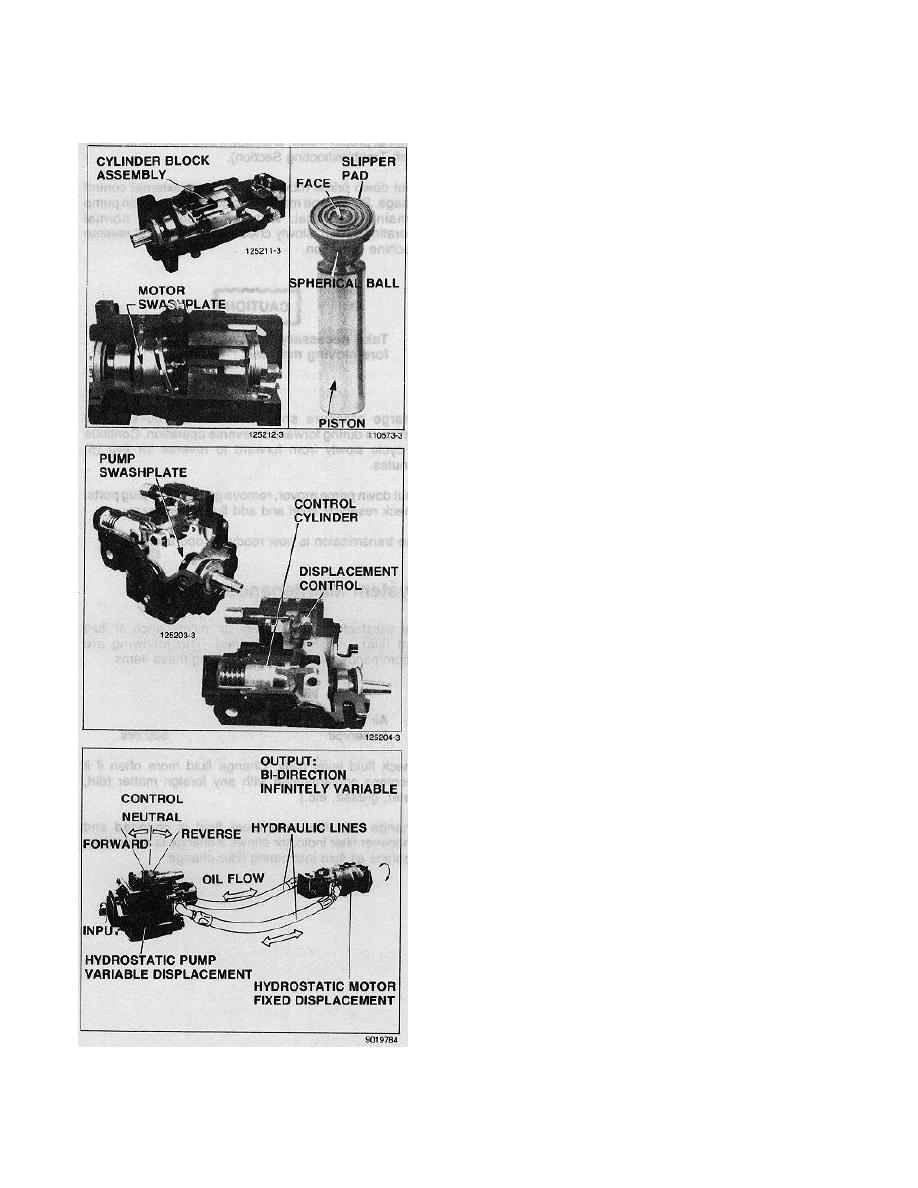
TM 5-3895-359-14&P
BASIC OPERATION
HYDROSTATIC PUMP AND MOTOR
Axial Piston, Slipper Pad Design
Sundstrand hydrostatic pumps and motors are an axial
piston, slipper pad design. There are nine (9) pistons
mounted in the cylinder block. As the cylinder block
rotates, these pistons are forced in and out of their bores
by the angle of the swashplate. This results in a specific
amount of fluid being displaced for every revolution of
the cylinder block. In a pump, the fluid is forced out as
the angle of the swashplate pushes the pistons into the
bores. In a motor, system pressure against the piston
causes it to slide down the inclined face of the
swashplate resulting in output rotation.
The slipper pad attaches to a spherical ball on the end
of the piston forming a ball and socket joint. This allows
the slipper pad to tilt at any angle and make contact with
the swashplate. The face of the slipper pad slides on a
hydrostatic fluid film which uses fluid pressure to
balance internal forces.
Variable Pump Tilting Swashplate
The variable displacement pumps use a tiltable
swashplate to vary displacement (output flow). The
swashplate is mounted on trunnion bearings and is
connected to hydraulic control (servo) cylinders. The
control directs fluid to and from the servo cylinders
causing the swashplate to tilt and change displacement
of the pump. The swashplate can be tilted in either
direction from 0 angle and provide pump flow in either
direction.
Since the angle of the swashplate causes the pistons to
stroke in and out of the cylinder block bores as it is
rotated, changing this angle varies the piston stroke and,
therefore, the amount of fluid being displaced (pumped)
to the motor. This results in a change in the output
speed of the motor. Tilting the swashplate in the
opposite direction reverses fluid flow to the motor and its
direction of rotation. Since each servo control cylinder
is spring loaded, loss of control pressure or charge
pressure will cause the swashplate to return to neutral
position.
Hydrostatic Transmission
The hydrostatic transmission consists of a variable
displacement pump connected by hydraulic lines to a
fixed displacement motor. The pump rotates in one
direction and requires a change of internal parts to
rotate in the opposite direction. The motor rotates in
either direction.
With the hydrostatic transmission, machine control can
be achieved with a single operator control which
provides smooth, stepless speed and direction changes.
Placing the control in neutral (0 swashplate angle) stops
transmission (motor) output which usually eliminates the
need for clutching mechanisms.
This feature,
however, does not eliminate the need for a service
brake or parking brake.
6-6

